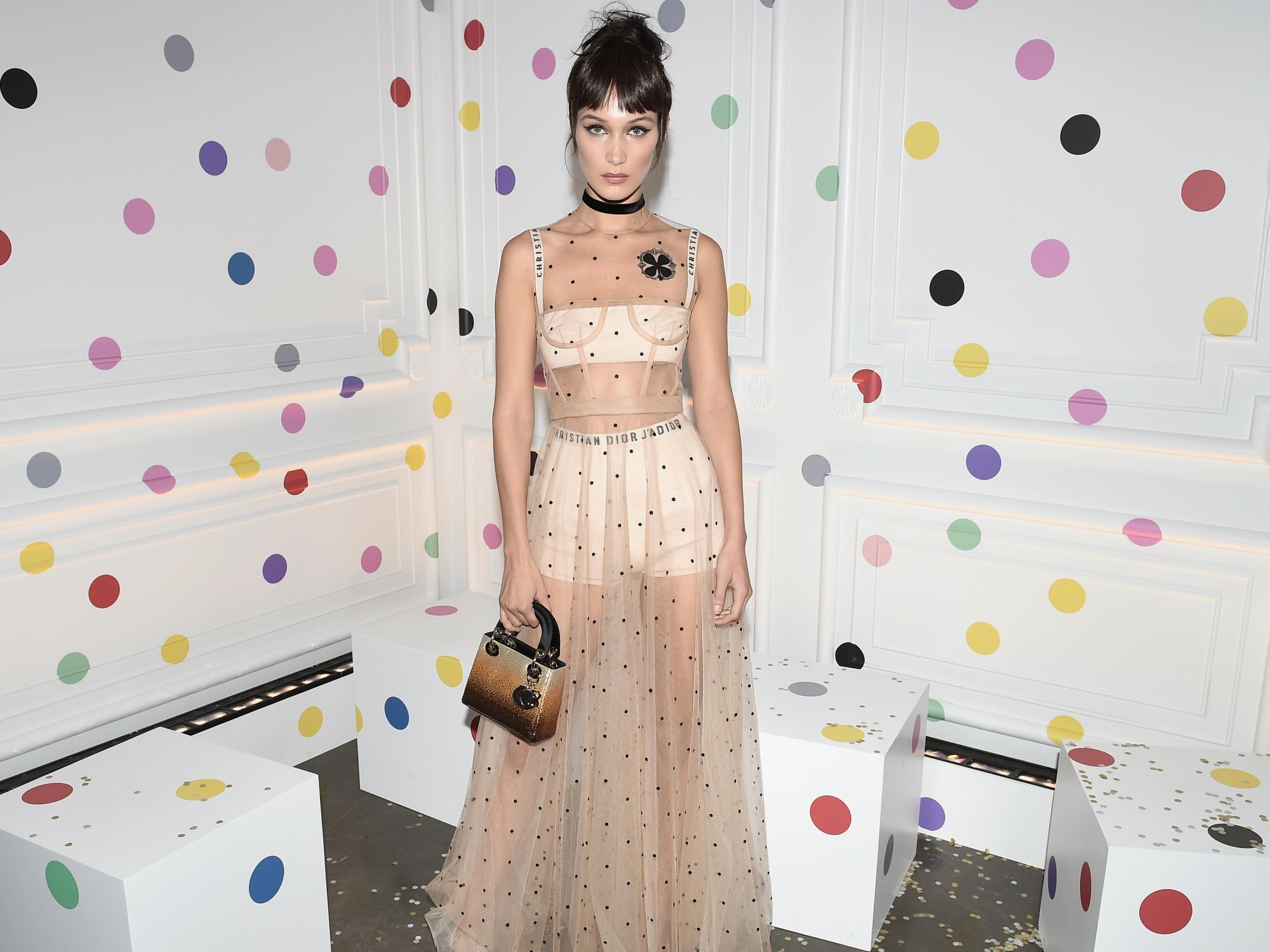Stop demonising thin women like Bella Hadid – the body positive movement doesn’t just apply to plus size women
Plus size models like Ashley Graham and Tess Holliday are credited for empowering a new generation of women to embrace their curves whilst challenging the notion of an ‘ideal body’. But somewhere along the way thin women have become the enemy and that’s not okay

Your support helps us to tell the story
From reproductive rights to climate change to Big Tech, The Independent is on the ground when the story is developing. Whether it's investigating the financials of Elon Musk's pro-Trump PAC or producing our latest documentary, 'The A Word', which shines a light on the American women fighting for reproductive rights, we know how important it is to parse out the facts from the messaging.
At such a critical moment in US history, we need reporters on the ground. Your donation allows us to keep sending journalists to speak to both sides of the story.
The Independent is trusted by Americans across the entire political spectrum. And unlike many other quality news outlets, we choose not to lock Americans out of our reporting and analysis with paywalls. We believe quality journalism should be available to everyone, paid for by those who can afford it.
Your support makes all the difference.Bella Hadid has landed a major campaign with Nike. She recently shared a photo on Instagram, posing alongside their billboard in New York with the caption “So excited to announce that I am officially part of the Nike family! More coming very soon”.
Sportswear fans have been quick to condemn Nike’s choice of newly-appointed Victoria’s Secret model Bella though. Many have criticised her for being too “thin”, not “athletic or muscular” and looking “malnourished”. Comments have included “Nike? She’s not an athlete but more importantly it’s giving young girls unrealistic expectations yet again” and “Sport brands need to use an athletic bodied person to model”.
The body positive movement aims to celebrate women of all shapes and sizes but the new rules continue to exclude one group. Body shaming of slim women is still widespread and the only thing worse than being “thin” is thin and with no visible muscle. “Strong is the new skinny” we are told but this pseudo empowering message is simply another way of defining what women should look like.
In September, The Women’s Equality Party launched the “No Size Fits All Campaign” aimed at tackling the fashion industry’s influence on body image. The campaign calls for a change in the law to ban fashion models with a BMI below 18.5. While the campaign’s aims appear laudable, by failing to define an upper BMI limit the WEP are effectively looking to legalise the demonisation of “thin”.
Although BMI is only one measure, and it’s important to take other factors into account, a “healthy” weight range for women is defined as a BMI of 18.5-24.9. Alarmingly the World Health Organisation predicts 64 per cent of women in the UK will be overweight by 2030. So why the WEP recognise the danger in being underweight but ignore the serious health risks of being overweight is perplexing.
Plus size models like Ashley Graham and Tess Holliday are credited for empowering a new generation of women to embrace their curves whilst challenging the notion of an “ideal body”. Along the way “thin women” have become the enemy; often accused of being self-absorbed and obsessive or borderline anorexic.
Bella Hadid is being slammed for being too thin and not looking like an athlete, with the clear suggestion that “athletic” is an aesthetic quality rather than related to physical performance. Curiously despite the criticism of lacking athleticism, Bella is a nationally ranked, award-winning equestrian, whose dreams of representing the United States at the 2016 Olympics came to an end last year after she contracted Lyme disease.
This misguided notion that an athletic woman has a particular look is easily dispelled. From the Amazonian proportions of USA’s Melissa Seidermann (who is six foot and weighs 207lbs) to China’s petite Linlin Deng (who stands at four foot nine inches and weighs 79lbs) the 2016 Olympics highlighted huge diversity in elite athlete physiques. If further proof were needed, the inspiring achievements of Paralympians demonstrates that judging physical ability based on appearance is flawed.
The ethos of body positive challenges the judgements we make about women. Thin is not the enemy, aesthetic is no gauge of athletic, and a woman’s worth can’t be measured by physical appearance alone.
Join our commenting forum
Join thought-provoking conversations, follow other Independent readers and see their replies
Comments